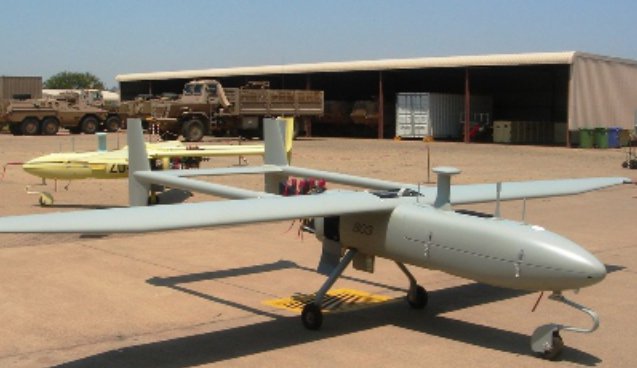 The South African Council for Scientific and Industrial Research (CSIR) is making progress in integrating national research and testing efforts aimed at putting technologies in place for a medium-altitude, long-endurance (MALE) unmanned aerial system through the Civil Commercial Unmanned Aerial System (CCUAS) project.
The South African Council for Scientific and Industrial Research (CSIR) is making progress in integrating national research and testing efforts aimed at putting technologies in place for a medium-altitude, long-endurance (MALE) unmanned aerial system through the Civil Commercial Unmanned Aerial System (CCUAS) project.
For the past three years the Department of Science and Technology (DST) has been funding this project through its Chief Directorate: Technology Localisation and Advanced Manufacturing. The project is co-ordinated by the CSIR and managed by the Joint Aerospace Steering Committee (JASC).
As a project of national relevance and impact, CCUAS is a collaborative effort relying on the technical expertise of researchers at various tertiary education institutions, the CSIR and industry.
At Stellenbosch University, Professor Thomas Jones leads a long-term project on control capabilities development, while the research of Professor Johan Meyer of the University of Johannesburg centres on alternative propulsion energy sources, sensor data and image processing.
Further work on smart structures, avionics and technology road-mapping for specific systems is currently being negotiated with other institutions.
According to the CSIR’s Des Barker, CCUAS has the potential to develop into a national flagship.
“Sadly, South Africa is trailing the rest of the world in bringing this disruptive technology to benefit national security on the one hand and provide socio-economic benefits on the other. The single biggest challenge technologically and the key to unlocking this potential in the civil commercial domain lies in breaching the sense-and-avoid challenges and regulatory processes.
“Worldwide, the force multiplication benefits of UAS have been recognised in both the military and the civil/commercial applications with market forecasts for UAS predicting major growth, especially in the period from 2013 onwards. The 2013 ‘gate’ is based on predictions of technology maturity required for compliance with air traffic legislation, while market forecasts are in the order of US$8.7 billion for 2018, excluding sensors.
“If South African industry can capture approximately one percent of the projected market it would result in huge, additional foreign revenue. In addition to the revenue from platforms, components and systems, civil/commercial UAS applications offer an excellent opportunity for SMMEs to provide a UAS-based service – for example, fire management, maritime patrols and infrastructure monitoring.
“There is no doubt South Africa has the required skills, experience and technological capacity to compete on an equal footing with the UAS industry worldwide. Ultimately, South Africa stands to benefit from a successful industry in UAS, should this be introduced into the national capability inventory,” Barker, a retired SAAF general, said.
The CSIR’s capability in aeronautical research includes experimental wind tunnel facilities, multi-disciplinary design optimisation (MDO) codes and a propeller testing rig facility. This facility is used to test the design of propellers for an Unmanned Aircraft . Headed by John Monk, its UAS synthetic integration laboratory provides state-of-the-art modelling and simulations for aeronautical design and research.
The CSIR’s MDO capability has been significantly upgraded through the CCUAS project, building on the CSIR’s access into EU (European Union) Framework research programmes and through integration of established expertise in aero-elasticity, novel airframe layouts and computational fluid dynamics methods. Other CSIR research focuses on high-value civilian UAS applications such as a small rotorcraft for powerline inspection.
Industry players such as Denel Dynamics have manufactured and exported the Seeker II UAS while Advanced Technologies and Engineering (ATE) has produced UAS, such as the Vulture in support of the SA Army’s Artillery Formation, and Kiwit. This experience is invaluable to the CCUAS project regarding airframe design and production.
Projects funded by the Aerospace Industry Support Initiative (AISI), a Department of Trade and Industry initiative, hosted and managed by the CSIR, contribute to this national project.
Nomfuneko Majaja, Chief Director: Advanced Manufacturing, explained: “AISI’s role is to support the local South African aerospace industry. In doing so, it facilitates partnerships between local players and between local and global players to improve existing technologies and master technologies for new sustainable platforms.”
Socio-economic impact:
The influence and input of the JASC comprising representatives from the Departments of Science and Technology, Trade and Industry, Public Enterprises, Defence and Military Veterans, and industry, industry associations, science councils and universities.
The impact of the CCUAS project on South Africa’s socio-economic domain will leverage the collective capabilities of different players. These capabilities make possible the set of technologies for the MALE system, which will in turn feed into the design and development of various UAS. The CSIR has been tasked to consolidate and improve this growing collaboration to capitalise on opportunities in the civilian commercial UAS market.
Civil applications range from research; border and coastal surveillance; search and rescue; fire detection and fire fighting; communications relay; law enforcement; and disaster and emergency management to industrial applications (crop spraying, surveillance, monitoring of power lines and traffic); agriculture and fisheries; digital mapping and planning for land management; transport of medical samples and media reporting. Some applications are already in widespread use worldwide.
Source: Defence Web
